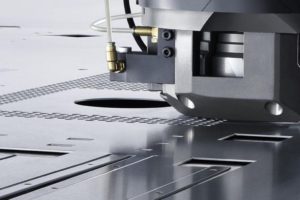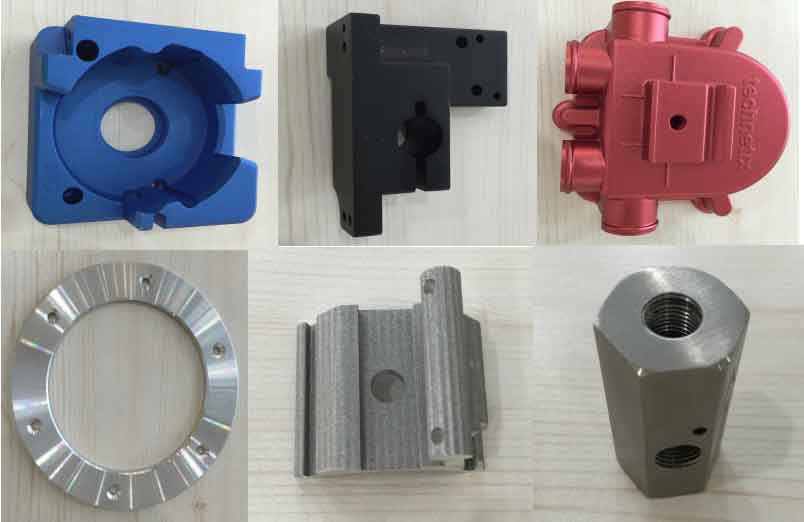Our automated Metal CNC PUNCHING turrets can process the most intricate formed features, perforations and patterns with high speed precision. Sheet metal punching is the most efficient way to produce precision fabricated metal products with many holes. Our sheet metal punching machine can also form countersinks, embossments, extrusions, and louvers. Perfect for customized metal products with perforated hole patterns, electrical knock-outs, part number stamps, and countersunk holes.
Metal Punching

| Equipment | 2 – Single Station Strippit Presses 1 – Single Station Strippit Press with auto backgage 5 – CNC Turret Punch Presses to 30 metric tons |
|
| Automation | Operators trained & certified in the use of multiple machines. | |
| Volume Capabilities | Prototype Runs to Several Million Pieces Annually Depending on Product Complexity & Application | |
| Materials | Aluminum (all grades) Mild Steel High Strength (HSLA) Steel Cold Rolled Steel Hot Rolled Steel Stainless Steel |
Austinitic (300 series) Stainless Steel Specialty Stainless Steel Galvanized Steel Brass Copper |
| Data Exchange | ProEngineer AutoCAD Master CAM SolidWorks Part Files Catia CAD/CAM |
SolidWorks Assembly Files 2D & 3D DXF Files 2D & 3D IGES Wireframe other CAD/CAM Formats |
| Secondary Operations | Tooling Die Tapping Staking Value Added Process Hardware Installation Tapping & Deburring Cleaning |
Heat Treating Plating Anodizing Screening Painting Returnable/Reusable Packaging |
Sheet Metal Punching: Defined
Sheet metal punching in metal fabrication is the process of using a machine to press a shape through a sheet of metal and into a die to create the desired shape in the metal. This is most commonly done by use of a turret, a computer numerical controlled machine that houses tools and their corresponding dies in a revolving indexed turret.
These machines use hydraulic, pneumatic, or electrical power to press the shape with enough force to shear the metal. The shape is formed by pressing the material against a die with a huge force. The shear forces generated between the material and die separate the material into the desired shape.
The desired shape is not obtained, however, as burred edges and rough surfaces are formed. These edges and surfaces must be further processed until the desired shape is achieved.
Small - medium - high order quantity
Metal Stamping
With our multiple single station, turret station, or single point gap series presses, MiMfactories is configured to meet your sheet metal stamping requirements. Classic can handle short to long run sheet metal stamping projects and meet your production needs.

| Equipment | 3 – 60 Ton Punch Presses 6 – 25 Ton Punch Presses 3 – 110 Ton Punch Presses with coil process equipment 4 – 220 Ton Punch Presses with coil process equipment |
|
| Automation | Operators trained & certified in the use of multiple machines. Highly automated. Automated machines feed, part and scrap material. | |
| Volume Capabilities | Prototype Runs to Several Million Pieces Annually Depending on Product Complexity & Application | |
| Materials | Aluminum (all grades) Mild Steel High Strength (HSLA) Steel Cold Rolled Steel Hot Rolled Steel Galvanized Steel |
Stainless Steel Austinitic (300 series) Stainless Steel Specialty Stainless Steel Brass Copper |
| Data Exchange | ProEngineer AutoCAD Master CAM SolidWorks Part Files Catia CAD/CAM |
SolidWorks Assembly Files 2D & 3D DXF Files 2D & 3D IGES Wireframe other CAD/CAM Formats |
| Secondary Operations | Tooling Die Tapping Staking Value Added Process Hardware Installation Tapping & Deburring Cleaning |
Heat Treating Plating Anodizing Screening Painting Returnable/Reusable Packaging |
Unlike single station turret presses “nibbling” away your desired part one tool at a time, our Gap Presses for sheet metal stamping are capable of producing a completed metal part with as little as one hit. Using die sets referred to as “hard tooling” to minimize the sheet metal stamping and metal forming process, Gap presses allow a completed part or series of parts to be reproduced quickly and efficiently.
To increase the speed of production, the sheet metal stamping machines are equipped with a coil feeding system. This system allows the loading of coiled material onto a feeding dock, which is then fed through a material “straightener” to allow a consistently flat “blank” to enter the punching area without operators having to stop production.
Should your completed part require an actual blank to be manually loaded into the metal stamping machine, our trained operators are capable of ensuring successful repeatability while maintaining a safe work environment through the use of electronic “laser borders” that prevent our sheet metal stamping machines from cycling should any foreign objects enter the punching area, protecting our operators and your die sets.
MiMfactories new oiling system automatically injects vanishing oil onto the cutting surface to extend die life as well as decrease the amount of burring produced by the metal punching process. This oiling system greatly reduces the need for secondary operations to remove these burrs, such as tumbling.
Sheet Metal Stamping: Defined
A punch press is commonly mechanically operated but some simple ones are man-powered. A sheet metal stamping punch press often consists of these parts: frame, motor, a ram that holds the punch, die posts, bed, and bolster plate that holds the die. A punch is often made of hardened steel or carbides.
The punch press forces the punch into a work piece to pierce a hole that has a diameter equivalent to the punch. A die is located on the opposite side of the work piece and supports the edges of the hole created to keep it from deforming during the punch. There is a small amount of clearance between the punch’s diameter and the die’s. This clearance depends on the work piece material and various tolerances.
Product materials of cast iron, cast steel, super duplex, SST, copper based & aluminum based alloys.
- CNC milling (Aluminum, brass, steel, zinc alloy, many others )
- Sheet metal (Steel, Aluminum, many others)
- Die Casting (ADC12,etc);
- Finish :remove bur, sandblast, anodized, painting, printing, plating, high polish, mirror polish, blackening, powder coating, etc.
Here below please find some pictures we have made recently:

Contact us to learn more about the MiMsactories advantage for the metal extrusion industry.
FOR FAST QUOTE EMAIL US: 2D/3D DRAWINGS
